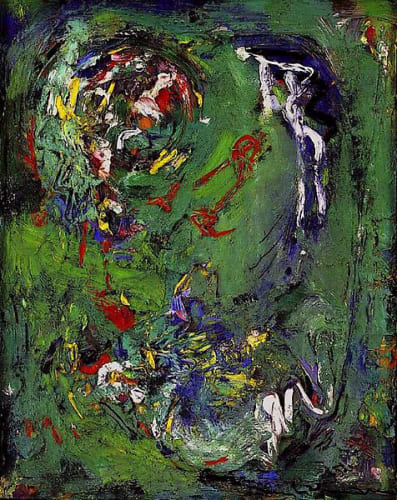Drawing & Painting
Past exhibition
-
OverviewGroup exhibition Willem de Kooning Richard Diebenkorn Sam Francis Arshile Gorky Al Held Hans Hofmann Joan Mitchell Roy Lichtenstein Robert Rauschenberg Ad Reinhardt Dorothea Rockburne Philip Taaffe Frank StellaLawrence Rubin • Greenberg Van Doren • Fine Art is pleased to present a selection of paintings and drawings from the 1940s through the 1990s. This exhibition explores the divergent paths in post-war abstraction taken by some of the most influential American artists of the twentieth century.
Hofmann, a patriarch of American modernism, is represented by the small, joyous painting Bouquet, 1951. Bouquet’’s thick, swirling layers of paint contrast with the smooth, cool surface of Ad Reinhardt’s extraordinary Blue and Grey, 1950. Hofmann and Reinhardt’s interest in pure abstraction is echoed by Sam Francis’s monumental canvas Untitled, 1959, in which fragmented fields of brilliant color form puzzle-like pieces. It was during the late 50s that Richard Diebenkorn turned from abstraction to the figure. From 1958 comes his portrait-sized canvas Woman with Hat. A more oblique reference to the figure is found in de Kooning’s Untitled, 1974. Here expressionistic brushstrokes of fleshy pinks are punctuated by passages of blue and orange. Joan Mitchell’s painterly Maple Leaf Forever, 1968, takes nature as its source of inspiration. The Minimalist aesthetic of the 70s is exemplified by Al Held’s important black and white painting North, Northwest, 1973 and Dorothea Rockburne’s folded paper piece Arena IV, 1978.
Also included in the exhibition are later works by Rauschenberg and Lichtenstein, created in the artist’s signature styles. Rauschenberg’s dye transfer painting High Pockets, 1997, is an homage to American industry. Interior with Woman, 1997, from Lichtenstein’s last series of interiors, recalls his women from the 60s. Frank Stella’s large relief Ahab the Carpenter, 1991, is from the ongoing series inspired by Melville’s Moby Dick. In Philip Taaffe’s mural sized Tsuba Colony, created for the 1995 Whitney Biennial, barbed wire weaves its way through circular medallions. -
Installation Shots
-
Artist




